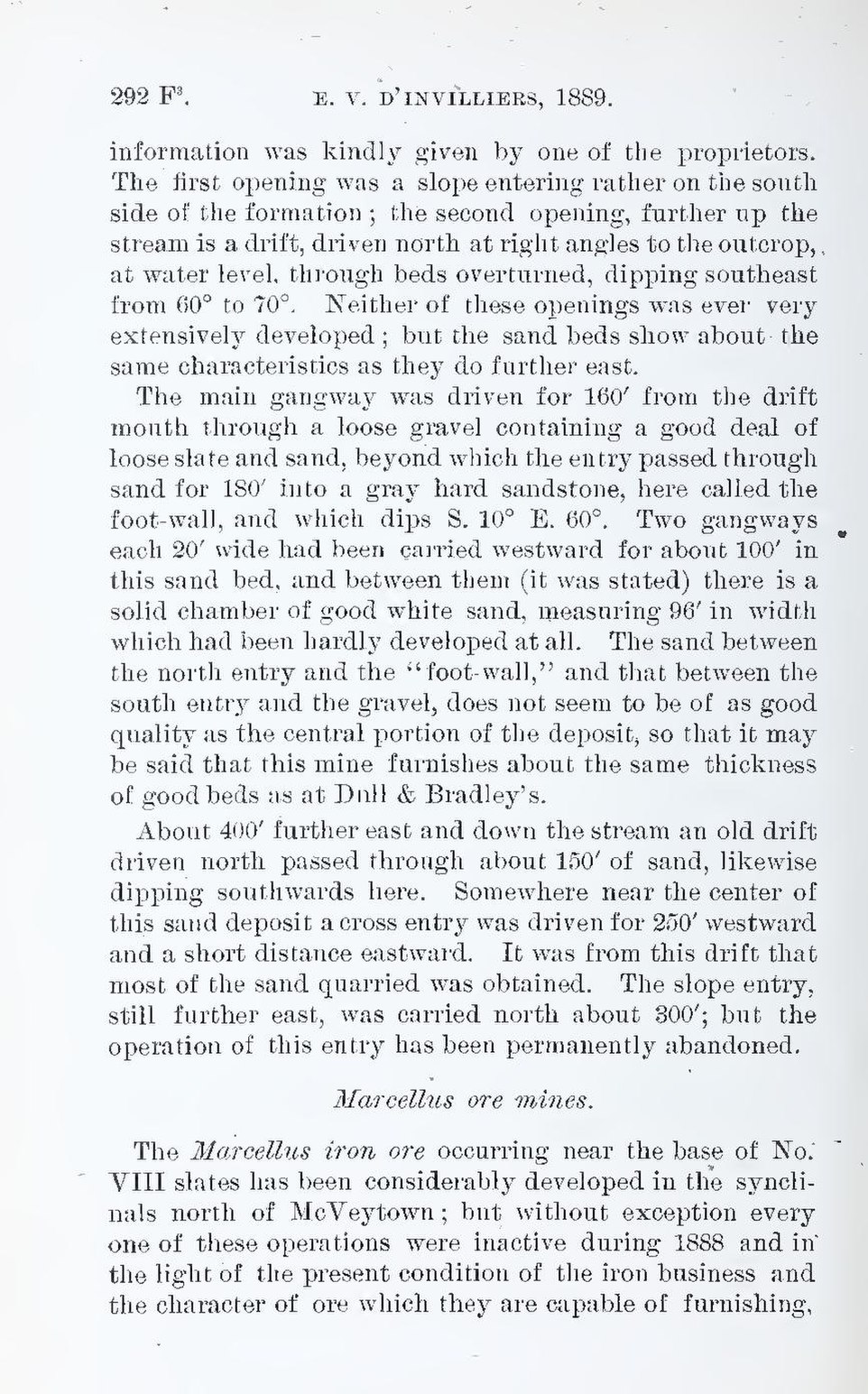information was kindly given by one of the proprietors. The first opening was a slope entering rather on the south side of the formation; the second opening, further up the stream is a drift, driven north at right angles to the outcrop, at water level, through beds overturned, dipping southeast from 60° to 70°. Neither of these openings was ever very extensively developed; but the sand beds show about the same characteristics as they do further east.
The main gangway was driven for 160′ from the drift mouth through a loose gravel containing a good deal of loose slate and sand, beyond which the entry passed through sand for 180′ into a gray hard sandstone, here called the foot-wall, and which dips S. 10° E. 60°. Two gangways each 20′ wide had been carried westward for about 100′ in this sand bed, and between them (it was stated) there is a solid chamber of good white sand, measuring 96′ in width which had been hardly developed at all. The sand between the north entry and the “foot-wall,” and that between the south entry and the gravel, does not seem to be of as good quality as the central portion of the deposit, so that it may be said that this mine furnishes about the same thickness of good beds as at Dull & Bradley’s.
About 400′ further east and down the stream an old drift driven north passed through about 150′ of sand, likewise dipping southwards here. Somewhere near the center of this sand deposit a cross entry was driven for 250′ westward and a short distance eastward. It was from this drift that most of the sand quarried was obtained. The slope entry, still further east, was carried north about 300′; but the operation of this entry has been permanently abandoned.
Marcellus ore mines.
The Marcellus iron ore occurring near the base of No. VIII slates has been considerably developed in the synclinals north of McVeytown; but without exception every one of these operations were inactive during 1888 and in the light of the present condition of the iron business and the character of ore which they are capable of furnishing,
